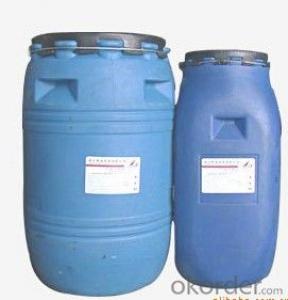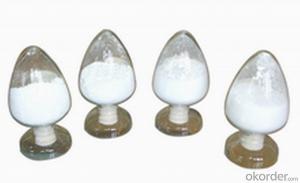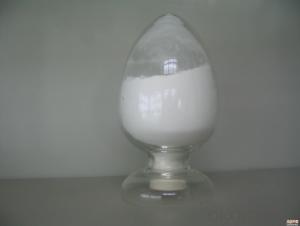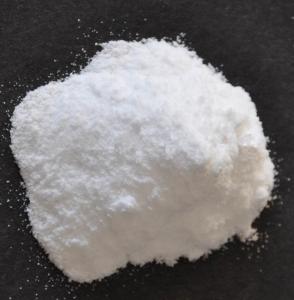BEST PRICE Sodium Lauryl Ether Sulphate SLES
- Loading Port:
- China Main Port
- Payment Terms:
- TT OR LC
- Min Order Qty:
- -
- Supply Capability:
- -
OKorder Service Pledge
OKorder Financial Service
You Might Also Like
3.Technical data:
Item | Index | measuring method | |
70% | 28% | ||
Appearance | White to yellowish paste | Colorless to yellowish clear liquid | eye measurement |
Active matter, % | 70±2 | 28±1 | GB/T 5173-1995 |
Sodium sulfate, % (relative to 100% active matter ) | 1.5 max. | 1.5 max. | GB/T 6366-1992 |
Unsulfated matter, %( relative to 100% active matter) | 2.0 max. | 2.0 max. |
|
pH value (1% a. m.) | 7.0~9.0 | 7.0~8.5 | GB/T 6368-1993 |
Color, Hazen (5% a. m.) | 20 max. | 10 max. | GB/T 3143-1982 |
4.Application
1.Liquid diswashing agents
2.light-duty detergents
3.shampoo, shower gels, foam baths
4.suited for highly concentrated endproducts
5.Packaging: 110kg /170kg/220kg (N.W.) per plastic drum.
- Q: What is the isomeric structure of oxygen-containing derivatives?
- Play the Transformers. As long as the same molecular formula, you can group out how many different structures, there are a number of isomers.
- Q: Simply talk about hydrocarbons
- Hydrocarbon products in the daily production, life is widely used, the most representative of the commercial life of the HCR433b hydrocarbon refrigerant, and the most representative of the automotive HCR436a hydrocarbon refrigerant.
- Q: Chemical life network: chemical (inorganic reaction, organic reaction) is equal to the life of life reaction?
- Organic chemistry is the study of the origin of organic compounds, preparation, structure, properties, applications and related theories of science, also known as carbon compounds.
- Q: Are all carbon compounds all organic?
- No, carbon dioxide and carbonates, bicarbonate is not it
- Q: Cracked
- It is almost impossible for this problem to look at your reaction conditions. Generally speaking, the alkane reaction is mainly difficult to decompose directly into ions
- Q: Is fatty acid and carboxylic acid the same thing?
- A fatty acid is a carboxylic acid which refers to a carboxylic acid having only a chain hydrocarbon group
- Q: Is the number of hydrogen atoms in the hydrocarbon or hydrocarbon derivative molecule be even
- The number of hydrogen atoms in the hydrocarbon must be even.
- Q: What is the intermediate in organic chemistry?
- The reaction intermediate (or intermediate) is the intermediate product in the chemical reaction. Generally unstable, difficult to separate. It needs to be distinguished from the transition state: the reaction potential map shows all the reaction intermediates except for the reactants and the product; the transition state is all the highest point of the reaction curve.
- Q: What are the sugars?
- Carbohydrate carbohydrates, also known as carbohydrates, are the most widely distributed and most important organic compounds in the world. Glucose, sucrose, starch and cellulose are all carbohydrates. X0d carbohydrates are all organisms The main source of energy needed to sustain life activities is not only nutritious but also has special physiological activity, such as: heparin in the liver has anticoagulant effect; blood sugar in the blood type related to immune activity.In addition, the nucleic acid The carbohydrate compounds are more important for medicine, and the carbohydrate compounds are composed of three elements, C, H and O, And O is usually 2: 1, and the proportion of water molecules, which can be expressed by the general formula Cm (H2o) n.Therefore, these compounds have been called carbohydrates, but later found that some compounds according to their structure and (C6H12O5), deoxyribose (C5H10O4), etc .; and some compounds such as acetic acid (C2H4O2), lactic acid (C3H6O3), and other compounds, such as acetic acid (C2H4O2), lactic acid (C3H6O3) And its composition is consistent with the general formula Cm (H2o) n, but the structure and properties are completely different with the carbohydrate compounds, so the name of the carbohydrate is not exact, but for a long time, so far still in use. X0d from Chemical structures, carbohydrates are polyhydroxyaldehydes, polyhydroxy ketones, and their condensates. <X0d sugars can be divided into three categories according to the hydrolysis and hydrolysis products: x0d monosaccharides: polyhydroxyalides that can not be hydrolyzed Such as glucose, fructose, etc. x0d disaccharides: hydrolysis of sugar to produce two molecules of monosaccharides such as sucrose, maltose, etc. x0d polysaccharide: can be hydrolyzed to produce many molecules of sugar monosaccharides such as starch, glycogen, Cellulose, etc. x0d sugars often use their names according to their origin.
- Q: Why does the hydrocarbon derivative make the bromine water fade and the hydrocarbon can not
- Should be able to ah and bromine water addition reaction and fade:
Send your message to us
BEST PRICE Sodium Lauryl Ether Sulphate SLES
- Loading Port:
- China Main Port
- Payment Terms:
- TT OR LC
- Min Order Qty:
- -
- Supply Capability:
- -
OKorder Service Pledge
OKorder Financial Service
Similar products
Hot products
Hot Searches
Related keywords
























